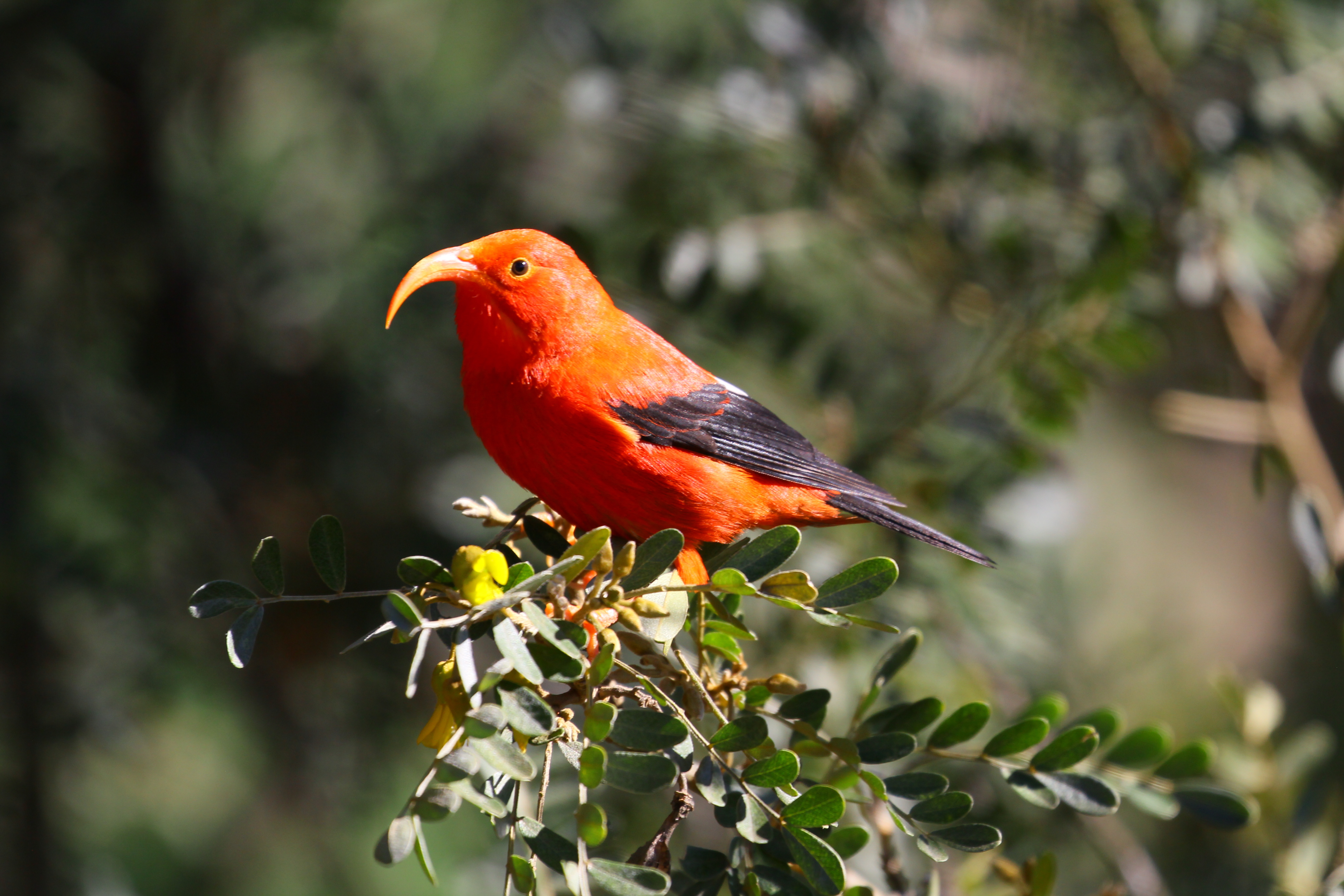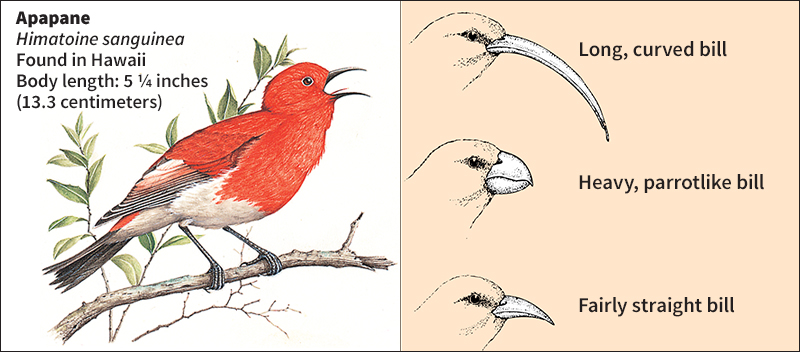Hawaiian honeycreeper is a small, colorful songbird that lives only in Hawaii. Most species (kinds) have become extinct, as a result of human activities.


A single species of songbird arrived in Hawaii more than 4 million years ago. These birds evolved (developed gradually) into more than 50 species of honeycreepers as they adapted to a variety of conditions and spread to new islands that rose from the ocean. Hawaiian honeycreepers developed an assortment of bill shapes and sizes suited to feeding on different kinds of flower nectar, insects, or seeds.
People first reached Hawaii about a thousand years ago. By the time Europeans arrived in 1778, nearly half of Hawaiian honeycreeper species were already extinct. Since then, about two-thirds of the remaining species have become endangered or extinct. People have harmed the birds by introducing cats, goats, mosquitoes, pigs, rats, sheep, and other animals into the honeycreeper’s environment. Some of these animals hunt honeycreepers or compete for food. Others destroy the forested areas where honeycreepers live. Mosquitoes carry disease. People are trying to save the remaining birds by controlling harmful animals and by restoring forests. Scientists are also breeding honeycreepers in captivity to release them into the wild.
